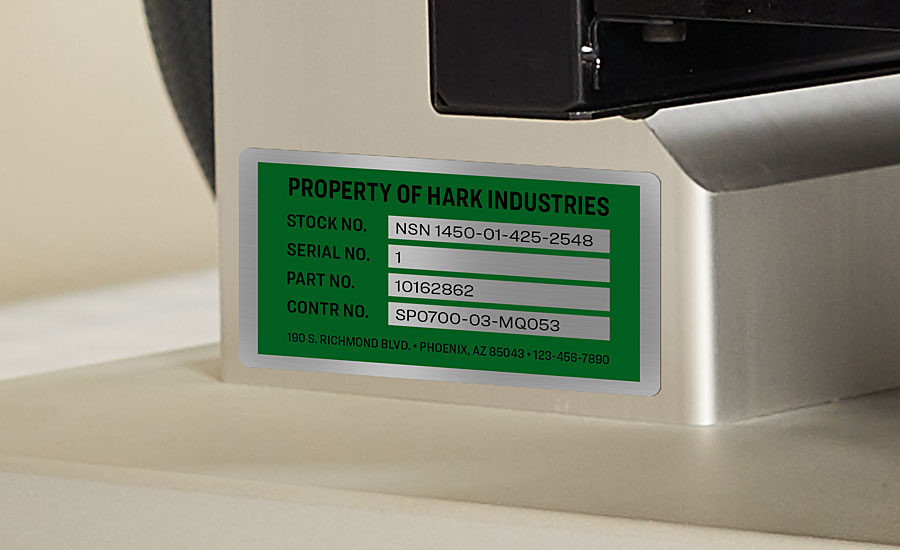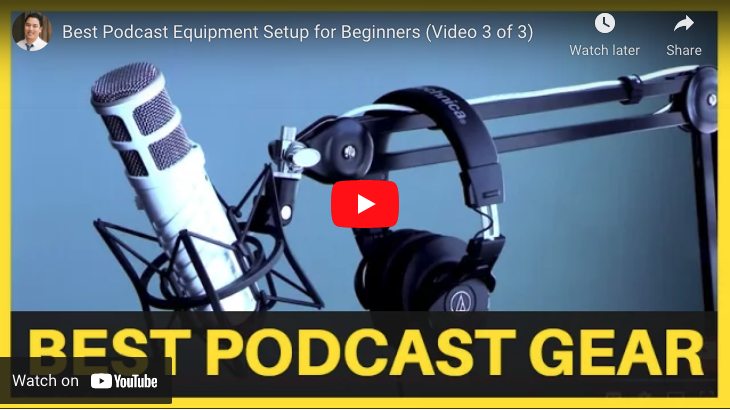
List of Podcasting Gear
- Computer. Common sense right? You need a computer to record and upload your .mp3 files. Most people will do just fine...
- Microphones. Don’t use your computer’s built-in microphone. The easiest way to get started is to use a USB microphone.
- Audio Interface. This is basically the bridge between your microphone and your computer. It converts the...
Full Answer
What is the best equipment for a podcast?
Must-Have Podcast Tools
- External Microphone. Anyone who is even remotely familiar with the concept of sound recording will vouch for the importance of a good microphone.
- Microphone Stand & Boom Arm. Microphone stands, despite being relatively affordable, are often ignored by novice podcasters. ...
- Shock Mount. ...
- Pop Filters. ...
- Audio Interface. ...
- Headphones. ...
- Headphone Amplifier. ...
What equipment will be needed to start a podcast?
The 10 Technology Items You'll Need to Start a Podcast
- 1. A good microphone Audio is one area that you won’t want to cut corners with. ...
- 2. Headphones Your headphones don’t have to be top of the line, but you will want something that’s up to the job. ...
- 3. A pop filter When talking directly into the microphone, your b’s and p’s will sound amplified. ...
- 5. ...
- 6. ...
- 7. ...
- 8. ...
- 9. ...
- 10. ...
What equipment do you need for a podcast?
What equipment do you need for a podcast? To start podcasting you'll only need a USB microphone, a pop filter, headphones, and a computer. More advanced users may want to buy an XLR microphone, audio interface, mixer, and a microphone stand.
How much does podcast equipment cost?
Summary: How Much Does Podcast Equipment Cost? Most people don't need to spend more than $100 on their podcasting equipment. A USB mic will suit you if you're recording solo or online/remote conversations. For the other bits and pieces, if you need them, you can be anywhere from $20 to $100+.

What equipment is required for a podcast?
For a conventional podcast, you need at a minimum a microphone, headphones, a computer, recording and mixing software, and internet access.
What do I need to start a podcast?
Steps to Start a PodcastDecide why you want to start a podcast.Choose a podcast topic, theme, and name.Select a podcast format and structure.Create podcast branding.Set up your podcast equipment.Find the best podcast recording software.Prepare for your first few podcast episodes.More items...
What equipment do I need for a 4 person podcast?
Podcast Essential Equipment: Microphone, Headphones, and Camera....Editing Your PodcastAutomatically stitches together your participant's separate tracks.Smart Speaker Mode analyzes your video and automatically and seamlessly switches between speakers.Customize the way your video looks with frames and layouts.More items...•
Do podcasters make money?
Sponsorships are the most common way podcasters make money. This is when the podcast promotes the sponsor during the show. You probably hear your favorite shows plug their advertisers a few times in every episode. How much you earn from a sponsor depends on the number of downloads your episodes earn.
How much money do podcasts make?
Assume you're a podcaster and you do the following each month: 1.00% of your audience purchases through your link, earning you $15 for each sale. 0.05% of your audience buys an online course per month for $99. You release about four episodes of your podcast each month.
Do you need headphones for podcasting?
You do need headphones for podcasting. Headphones are a must for any type of podcast kit. You're going to need headphones regardless of where you're recording, or the environment you're recording in. You'll need to be able to hear how you and everyone else on the podcast sounds.
How long should podcasts be?
The length of your podcast also depends on your subject, industry or genre. It could be that around 15-20 minutes perfect for your listeners. But maybe your specific audience wants more in-depth, exploratory information; in which case, 45-90 minutes would provide more value.
Do I need a microphone for a podcast?
You definitely need a microphone if you want to start a podcast. In fact, you'll need one for every person who's going to be speaking on your show. Unfortunately, your computer's inbuilt microphone isn't going to cut it unless you want it to sound like you're broadcasting from a toilet.
What is a dedicated digital recorder?
A dedicated digital recorder is a great option for someone who wants to podcast on the go but is looking for a level of sound quality above what you'll get with a smartphone. On top of that, digital recorders offer a lot more settings and options for creating audio, because that's what they're literally built for.
What is an Alitu podcast?
Alitu is a tool that takes your recording, polishes it up, adds your music, and publishes the episode, all automatically. Learn more about Alitu. Finally, we get to the publishing stage. In order to upload your podcast for the world to hear, you need to sign up to a media host.
Do XLR mics need a computer?
XLR mics need additional equipment to run them. They don't plug straight into your computer, but instead, go into an interface, mixer, or digital recorder (more on these all later).
Can you use a rode smartlav+ to record podcasts?
The Rode SmartLav+ setup is ideal for on-the-go recording and location interviews.
What are the obstacles to starting a podcast?
A common obstacle to starting a new podcast is figuring out the proper podcast equipment, especially finding the right balance between cost and quality. Although you can certainly create a podcast with little to no gear that you don’t already own, creating content that stands out and is not held back by audio quality can be a challenge ...
What is a rode mic?
Rode is a top name in audio, and this mid-level mic is built especially to record clear, warm voice tones. The mic itself is in a sturdy metal shell that can handle heavy use, and internal pop filters and shock mounting reduce the need for extra accessories.
Is Audacity good for podcasts?
The pro of Audacity is how basic it is , but at the same time it can be a negative for podcasters that want to do a bit more with their audio. The editing tools that Audacity does provide can be a bit hard to navigate and getting the hang of it can be a challenge. Pro Tools First.
What is XLR microphone?
XLR podcasting microphones: has a 3 prong connection and is connected to a mixer and the computer. Typically used in professional setups. USB podcasting microphones: connects directly to the computer via a USB port. Typically used by beginners who prefer an easier setup and less equipment.
How many microphones does a MG10 mixer have?
The MG10 mixer has a 10-channel console that allows 4 microphone inputs. It includes 1 AUX send to incorporate additional sound effects or music while recording. Or try the MG06 option if you only need two mic inputs and don’t need the AUX live podcasting features.
What is an XLR mic?
Popular among professionals but expensive. An XLR, dynamic mic with a built-in pop filter. It also has multiple settings to better capture the qualities of male versus female voices. Its components shield against external hums and it has an internal suspension system to eliminate light vibrations.
What is a pop filter?
A pop filter is typically a foam or mesh screen fixed in front of the microphone while a windscreen fits over the top of the mic. If your podcast microphone doesn’t come with either built-in, this piece of equipment doesn’t break the bank and results in a much smoother sound.
What is the best way to get your mic up off your desk?
A mic stand or boom mount is a great solution for getting the mic up off the desk, and closer to mouth level. This is an important consideration because the vertical alignment (above or below) the mouth impacts the sound of your voice.
Why use a mixer for podcasts?
Mixer. Mixers are used to improve audio quality and offer multi-channel recordings for those with co-hosts or guests. It’s also a required piece for anyone using an XLR microphone. Adding a mixer to your podcast setup creates a new opportunity to record live episodes with AUX features.
How much RAM does a laptop have?
Budget friendly laptop for beginners. 8GB RAM, 12-hour battery life, 256GB of SSD storage, a speedy quad-core processor, and a variety of USB ports (Type-C, 3.0, and 2.0) and HDMI port.
What is the best way to monitor audio output?
Headphones: Another pretty straightforward one, headphones are used for monitoring your audio output. Plug them into your mixer and listen to how your audio is sounding carefully. We recommend over-ear, closed-back headphones for good sound isolation.
What is the best microphone for recording?
For Intermediate level, we’d recommend getting an XLR microphone for better sound quality. Mixer: The key element to your recordings.
What is a pop filter?
Microphones on their own are usually pretty sensitive, so a pop filter is a screen you put in front of the microphone to reduce the amount of breath hitting the microphone as you talk.
What is the best way to position a microphone?
Boom Arm: Not essential but extremely useful, a boom arm will not only help you to keep a clear recording space but it also makes it easier to position your microphone exactly where you need it to be. Shock Mount: Shock mounts reduce the amount of vibrations and handling noise the microphone may pick up.
Entry Level Option
With a 2 or more person podcast, you’ll each need an XLR microphone – and studio headphones are highly recommended. Because you can’t easily record more than 1 USB microphone into one computer, you’ll need a USB audio interface or mixer with at least as many XLR microphone inputs as you have hosts.
Intermediate Option
The Procaster is a big step up from the beginner multi-person kit and is an excellent value for the price.
Pro Option
Because all of these dynamic mics are known to be quiet, I highly recommend pairing them with the CL-1 Cloudlifter (for each mic). It converts phantom power into a very clean +25dB gain. Cloud Microphones has a CL-2 (2 mics) and rack mountable CL-4 model as well.
